ICM 1/35 Studebaker US6-U3 in German Service # 35493
 Spread the cost with Paypal Credit
0% for 24 months available on orders over £199
Spread the cost with Paypal Credit
0% for 24 months available on orders over £199
 Spread the cost with Klarna
0% for 24 months available on orders over £199
Spread the cost with Klarna
0% for 24 months available on orders over £199
![]()
The Studebaker US6-U3 was originally an American-made truck, extensively produced during World War II and supplied in large numbers to the Soviet Union under the Lend-Lease program.
However, several of these trucks found their way into the hands of the Axis powers, including Nazi Germany, through various means such as capture, battlefield recovery, and reallocation of resources.
Characteristics and Use
The Studebaker US6-U3 was a 2.5-ton, 6x6 military cargo truck known for its durability, reliability, and off-road capabilities. It featured a 5.7-liter, 94-horsepower Hercules JXD engine, which provided adequate power and performance for its class. The truck could carry a payload of 2.5 tons and was often used for transporting troops, supplies, and artillery.
Deployment by Axis Powers
When captured, the Studebaker US6-U3 trucks were quickly integrated into the logistics and transport divisions of the German Wehrmacht and other Axis forces. The Germans, in particular, valued these trucks for their rugged design and dependability, which were on par with or superior to many contemporary German vehicles. The captured Studebaker trucks were often repainted in German colors and markings and sometimes modified with locally available parts.
Adaptations and Modifications
The Axis forces made several modifications to the Studebaker US6-U3 to suit their needs. Common changes included:
Repainting and Rebranding: The trucks were repainted in German grey or camouflage patterns and adorned with Wehrmacht insignia.
Parts Replacement: Given the scarcity of original parts, Axis mechanics sometimes replaced broken or worn-out components with locally available substitutes.
Special Equipment: In some cases, these trucks were fitted with additional equipment, such as winches or specialized cargo racks, to enhance their utility in specific operations.
Impact and Legacy
The use of Studebaker US6-U3 trucks by the Axis powers underscored the vehicle's robustness and the strategic importance of capturing enemy equipment.
These trucks contributed significantly to the mobility and supply capabilities of the Axis forces, albeit in a relatively limited capacity compared to their original Allied use.
The presence of these trucks in Axis service also highlighted the interconnectedness and complexities of World War II logistics, where equipment from opposing sides often ended up being used against its original owners.
In summary, the Studebaker US6-U3's service with the Axis powers is a testament to its durability and the fluid nature of wartime resources, reflecting the broader narrative of World War II's dynamic and multifaceted logistics operations.
| SKU | ICM35493 |
|---|---|
| Manufacturer | ICM |
| Scale | 1/35 |
| EAN | 4823044410569 |
| Short Description | ICM 1/35 Studebaker US6-U3 in German Service # 35493 |
-
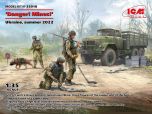 ICM 1/35 'Danger! Mines!' Ukraine, Summer 2022 "Brave Ukraine Series" # 35018Special Price £42.29 was £46.99 Save 10%
ICM 1/35 'Danger! Mines!' Ukraine, Summer 2022 "Brave Ukraine Series" # 35018Special Price £42.29 was £46.99 Save 10% -
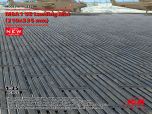 ICM 1/35 M8A1 US Landing Mat (210x336 mm) # 53200Special Price £12.42 was £13.80 Save 10%
ICM 1/35 M8A1 US Landing Mat (210x336 mm) # 53200Special Price £12.42 was £13.80 Save 10% -
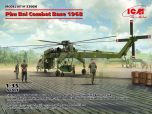 ICM 1/35 Phu Bai Combat Base 1968. Sikorsky CH-54A Tarhe, 2 sets of figures, M-121 Bomb, Set of Landing Mat # 53056Special Price £143.82 was £159.80 Save 10% Free UK Delivery
ICM 1/35 Phu Bai Combat Base 1968. Sikorsky CH-54A Tarhe, 2 sets of figures, M-121 Bomb, Set of Landing Mat # 53056Special Price £143.82 was £159.80 Save 10% Free UK Delivery -
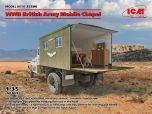 ICM 1/35 WWII British Army Mobile Chapel # 35586Special Price £44.99 was £49.99 Save 10%
ICM 1/35 WWII British Army Mobile Chapel # 35586Special Price £44.99 was £49.99 Save 10% -
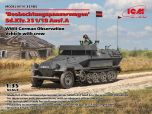 ICM 1/35 'Beobachtungspanzerwagen' Sd.Kfz.251/18 Ausf.A, WWII German Observation Vehicle with Crew # 35105Special Price £42.29 was £46.99 Save 10%
ICM 1/35 'Beobachtungspanzerwagen' Sd.Kfz.251/18 Ausf.A, WWII German Observation Vehicle with Crew # 35105Special Price £42.29 was £46.99 Save 10% -
 ICM 1/35 Humvee M1097A2 # 35435Special Price £34.02 was £37.80 Save 10%
ICM 1/35 Humvee M1097A2 # 35435Special Price £34.02 was £37.80 Save 10% -
 ICM 1/35 Combat Units Of The Armed Forces Of Ukraine # 35757Special Price £13.05 was £14.50 Save 10%
ICM 1/35 Combat Units Of The Armed Forces Of Ukraine # 35757Special Price £13.05 was £14.50 Save 10% -
 ICM 1/35 Infantry Weapons And Chevrons Of The Armed Forces Of Ukraine # 35749Special Price £17.82 was £19.80 Save 10%
ICM 1/35 Infantry Weapons And Chevrons Of The Armed Forces Of Ukraine # 35749Special Price £17.82 was £19.80 Save 10% -
 ICM 1/35 Kfz.70 with MG 34 WWII German Military Vehicle # 35502Special Price £32.22 was £35.80 Save 10%
ICM 1/35 Kfz.70 with MG 34 WWII German Military Vehicle # 35502Special Price £32.22 was £35.80 Save 10% -
 ICM 1/35 Studebaker US6-U5 WWII US Gasoline Tank Truck # 35492Special Price £39.42 was £43.80 Save 10%
ICM 1/35 Studebaker US6-U5 WWII US Gasoline Tank Truck # 35492Special Price £39.42 was £43.80 Save 10% -
 ICM 1/35 Leopard 2A6 With Crew 'Armed Forces Of Ukraine' # 35013Special Price £44.09 was £48.99 Save 10%
ICM 1/35 Leopard 2A6 With Crew 'Armed Forces Of Ukraine' # 35013Special Price £44.09 was £48.99 Save 10% -
 ICM 1/35 Dardanelles Campaign 1915 # DS3520Special Price £17.82 was £19.80 Save 10%
ICM 1/35 Dardanelles Campaign 1915 # DS3520Special Price £17.82 was £19.80 Save 10% -
 ICM 1/35 'Sankas' WWII Wehrmacht Ambulance Trucks # DS3523Special Price £71.99 was £79.99 Save 10%
ICM 1/35 'Sankas' WWII Wehrmacht Ambulance Trucks # DS3523Special Price £71.99 was £79.99 Save 10% -
 ICM 1/35 Sikorsky CH-54A "Tarhe" with Universal Military Pod # 53057Special Price £143.82 was £159.80 Save 10% Free UK Delivery
ICM 1/35 Sikorsky CH-54A "Tarhe" with Universal Military Pod # 53057Special Price £143.82 was £159.80 Save 10% Free UK Delivery -
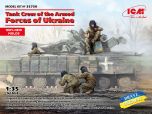 ICM 1/35 Tank Crew of the Armed Forces of Ukraine - Brave Ukraine Series # 35756Special Price £13.05 was £14.50 Save 10%
ICM 1/35 Tank Crew of the Armed Forces of Ukraine - Brave Ukraine Series # 35756Special Price £13.05 was £14.50 Save 10% -
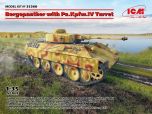 ICM 1/35 Bergepanther with Pz.Kpfw.IV Turret # 35360Special Price £35.82 was £39.80 Save 10%
ICM 1/35 Bergepanther with Pz.Kpfw.IV Turret # 35360Special Price £35.82 was £39.80 Save 10% -
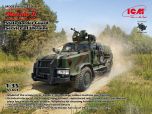 ICM 1/35 Kozak-2' State Border Guard Service of Ukraine "Brave Ukraine Series" # 35016Special Price £42.29 was £46.99 Save 10%
ICM 1/35 Kozak-2' State Border Guard Service of Ukraine "Brave Ukraine Series" # 35016Special Price £42.29 was £46.99 Save 10% -
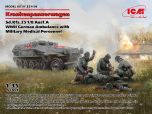 ICM 1/35 Sd.Kfz.251/8 Ausf.A , WWII German Ambulance with Military Medical Personnel # 35114Special Price £39.42 was £43.80 Save 10%
ICM 1/35 Sd.Kfz.251/8 Ausf.A , WWII German Ambulance with Military Medical Personnel # 35114Special Price £39.42 was £43.80 Save 10% -
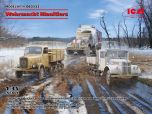 ICM 1/35 Wehrmacht Maultiers, Sd.Kfz.3b, V3000S/SSM with Shelter, KHD S3000/SS # DS3522Special Price £71.82 was £79.80 Save 10%
ICM 1/35 Wehrmacht Maultiers, Sd.Kfz.3b, V3000S/SSM with Shelter, KHD S3000/SS # DS3522Special Price £71.82 was £79.80 Save 10% -
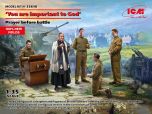 ICM 1/35 'You are important to God'. Prayer Before Battle # 35616Special Price £15.29 was £16.99 Save 10%
ICM 1/35 'You are important to God'. Prayer Before Battle # 35616Special Price £15.29 was £16.99 Save 10% -
 ICM 1/35 'Danger! Mines!' Ukraine, Summer 2022 "Brave Ukraine Series" # 35018Special Price £42.29 was £46.99 Save 10%
ICM 1/35 'Danger! Mines!' Ukraine, Summer 2022 "Brave Ukraine Series" # 35018Special Price £42.29 was £46.99 Save 10% -
 ICM 1/35 M8A1 US Landing Mat (210x336 mm) # 53200Special Price £12.42 was £13.80 Save 10%
ICM 1/35 M8A1 US Landing Mat (210x336 mm) # 53200Special Price £12.42 was £13.80 Save 10% -
 ICM 1/35 Phu Bai Combat Base 1968. Sikorsky CH-54A Tarhe, 2 sets of figures, M-121 Bomb, Set of Landing Mat # 53056Special Price £143.82 was £159.80 Save 10% Free UK Delivery
ICM 1/35 Phu Bai Combat Base 1968. Sikorsky CH-54A Tarhe, 2 sets of figures, M-121 Bomb, Set of Landing Mat # 53056Special Price £143.82 was £159.80 Save 10% Free UK Delivery -
 ICM 1/35 WWII British Army Mobile Chapel # 35586Special Price £44.99 was £49.99 Save 10%
ICM 1/35 WWII British Army Mobile Chapel # 35586Special Price £44.99 was £49.99 Save 10% -
 ICM 1/35 'Beobachtungspanzerwagen' Sd.Kfz.251/18 Ausf.A, WWII German Observation Vehicle with Crew # 35105Special Price £42.29 was £46.99 Save 10%
ICM 1/35 'Beobachtungspanzerwagen' Sd.Kfz.251/18 Ausf.A, WWII German Observation Vehicle with Crew # 35105Special Price £42.29 was £46.99 Save 10% -
 ICM 1/35 Humvee M1097A2 # 35435Special Price £34.02 was £37.80 Save 10%
ICM 1/35 Humvee M1097A2 # 35435Special Price £34.02 was £37.80 Save 10% -
 ICM 1/35 Combat Units Of The Armed Forces Of Ukraine # 35757Special Price £13.05 was £14.50 Save 10%
ICM 1/35 Combat Units Of The Armed Forces Of Ukraine # 35757Special Price £13.05 was £14.50 Save 10% -
 ICM 1/35 Infantry Weapons And Chevrons Of The Armed Forces Of Ukraine # 35749Special Price £17.82 was £19.80 Save 10%
ICM 1/35 Infantry Weapons And Chevrons Of The Armed Forces Of Ukraine # 35749Special Price £17.82 was £19.80 Save 10% -
 ICM 1/35 Kfz.70 with MG 34 WWII German Military Vehicle # 35502Special Price £32.22 was £35.80 Save 10%
ICM 1/35 Kfz.70 with MG 34 WWII German Military Vehicle # 35502Special Price £32.22 was £35.80 Save 10% -
 ICM 1/35 Studebaker US6-U5 WWII US Gasoline Tank Truck # 35492Special Price £39.42 was £43.80 Save 10%
ICM 1/35 Studebaker US6-U5 WWII US Gasoline Tank Truck # 35492Special Price £39.42 was £43.80 Save 10% -
 ICM 1/35 Leopard 2A6 With Crew 'Armed Forces Of Ukraine' # 35013Special Price £44.09 was £48.99 Save 10%
ICM 1/35 Leopard 2A6 With Crew 'Armed Forces Of Ukraine' # 35013Special Price £44.09 was £48.99 Save 10% -
 ICM 1/35 Dardanelles Campaign 1915 # DS3520Special Price £17.82 was £19.80 Save 10%
ICM 1/35 Dardanelles Campaign 1915 # DS3520Special Price £17.82 was £19.80 Save 10% -
 ICM 1/35 'Sankas' WWII Wehrmacht Ambulance Trucks # DS3523Special Price £71.99 was £79.99 Save 10%
ICM 1/35 'Sankas' WWII Wehrmacht Ambulance Trucks # DS3523Special Price £71.99 was £79.99 Save 10% -
 ICM 1/35 Sikorsky CH-54A "Tarhe" with Universal Military Pod # 53057Special Price £143.82 was £159.80 Save 10% Free UK Delivery
ICM 1/35 Sikorsky CH-54A "Tarhe" with Universal Military Pod # 53057Special Price £143.82 was £159.80 Save 10% Free UK Delivery -
 ICM 1/35 Tank Crew of the Armed Forces of Ukraine - Brave Ukraine Series # 35756Special Price £13.05 was £14.50 Save 10%
ICM 1/35 Tank Crew of the Armed Forces of Ukraine - Brave Ukraine Series # 35756Special Price £13.05 was £14.50 Save 10% -
 ICM 1/35 Bergepanther with Pz.Kpfw.IV Turret # 35360Special Price £35.82 was £39.80 Save 10%
ICM 1/35 Bergepanther with Pz.Kpfw.IV Turret # 35360Special Price £35.82 was £39.80 Save 10% -
 ICM 1/35 Kozak-2' State Border Guard Service of Ukraine "Brave Ukraine Series" # 35016Special Price £42.29 was £46.99 Save 10%
ICM 1/35 Kozak-2' State Border Guard Service of Ukraine "Brave Ukraine Series" # 35016Special Price £42.29 was £46.99 Save 10% -
 ICM 1/35 Sd.Kfz.251/8 Ausf.A , WWII German Ambulance with Military Medical Personnel # 35114Special Price £39.42 was £43.80 Save 10%
ICM 1/35 Sd.Kfz.251/8 Ausf.A , WWII German Ambulance with Military Medical Personnel # 35114Special Price £39.42 was £43.80 Save 10% -
 ICM 1/35 Wehrmacht Maultiers, Sd.Kfz.3b, V3000S/SSM with Shelter, KHD S3000/SS # DS3522Special Price £71.82 was £79.80 Save 10%
ICM 1/35 Wehrmacht Maultiers, Sd.Kfz.3b, V3000S/SSM with Shelter, KHD S3000/SS # DS3522Special Price £71.82 was £79.80 Save 10% -
 ICM 1/35 'You are important to God'. Prayer Before Battle # 35616Special Price £15.29 was £16.99 Save 10%
ICM 1/35 'You are important to God'. Prayer Before Battle # 35616Special Price £15.29 was £16.99 Save 10% -
 ICM 1/35 'Danger! Mines!' Ukraine, Summer 2022 "Brave Ukraine Series" # 35018Special Price £42.29 was £46.99 Save 10%
ICM 1/35 'Danger! Mines!' Ukraine, Summer 2022 "Brave Ukraine Series" # 35018Special Price £42.29 was £46.99 Save 10% -
 ICM 1/35 M8A1 US Landing Mat (210x336 mm) # 53200Special Price £12.42 was £13.80 Save 10%
ICM 1/35 M8A1 US Landing Mat (210x336 mm) # 53200Special Price £12.42 was £13.80 Save 10% -
 ICM 1/35 Phu Bai Combat Base 1968. Sikorsky CH-54A Tarhe, 2 sets of figures, M-121 Bomb, Set of Landing Mat # 53056Special Price £143.82 was £159.80 Save 10% Free UK Delivery
ICM 1/35 Phu Bai Combat Base 1968. Sikorsky CH-54A Tarhe, 2 sets of figures, M-121 Bomb, Set of Landing Mat # 53056Special Price £143.82 was £159.80 Save 10% Free UK Delivery -
 ICM 1/35 WWII British Army Mobile Chapel # 35586Special Price £44.99 was £49.99 Save 10%
ICM 1/35 WWII British Army Mobile Chapel # 35586Special Price £44.99 was £49.99 Save 10% -
 ICM 1/35 'Beobachtungspanzerwagen' Sd.Kfz.251/18 Ausf.A, WWII German Observation Vehicle with Crew # 35105Special Price £42.29 was £46.99 Save 10%
ICM 1/35 'Beobachtungspanzerwagen' Sd.Kfz.251/18 Ausf.A, WWII German Observation Vehicle with Crew # 35105Special Price £42.29 was £46.99 Save 10% -
 ICM 1/35 Humvee M1097A2 # 35435Special Price £34.02 was £37.80 Save 10%
ICM 1/35 Humvee M1097A2 # 35435Special Price £34.02 was £37.80 Save 10%


























